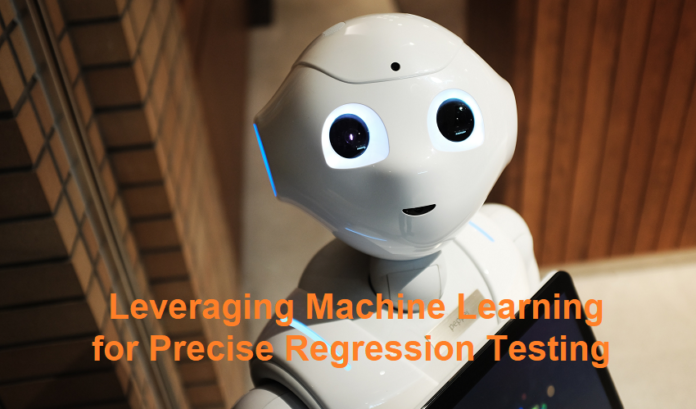
A key step in the development of software is regression testing. It ensures that existing functionalities continue to behave as expected after upgrades or the inclusion of new features. Traditional regression testing methodologies, however, confront various challenges. In this article, we study the idea of intelligent test case selection, a machine-learning technique. We will discuss how machine learning can circumvent traditional approaches’ limitations, allowing for more precise regression testing. You’ll comprehend the advantages and relevance of intelligent test case selection in software development.
Regression Testing and Test Case Selection
Regression testing is vital to software development to verify that recent improvements or updates to a software application do not bring new flaws or unanticipated difficulties. Its major purpose is to ensure that changed versions of the existing capabilities remain functioning as intended. Traditional techniques have frequently been used when choosing test cases for regression testing. These strategies do have significant limitations, though. Choosing manual test cases can be time-consuming and prone to error. Conversely, random test case selection requires a systematic technique, which limits its effectiveness in protecting vital software parts. Software for regression testing can automate the selection of test cases based on specified criteria, such as code coverage or impact analysis, to get around these difficulties.
Leveraging Machine Learning for Test Case Selection
Let’s start by learning how machine learning applies to software testing. Machine learning is the study of how computer systems may learn from data and develop without explicit programming. Machine learning algorithms can be used in software testing to identify the regression test cases that are the most pertinent. The use of machine learning for test case selection offers various advantages. First, it can substantially cut down on the time and effort needed for regression testing. Machine learning algorithms can intelligently examine historical test case execution data by automating the selection process and finding the most important test cases to be included in regression testing. Regression testing can also be made more effective by employing machine learning. The model can rate test cases according to their probability of showing potential errors or defects by examining several patterns and attributes in the previous test case data. Let’s study the machine learning approaches utilized to choose test scenarios. Numerous strategies include neural networks, support vector machines, decision trees, and random forests.
Decision trees
Decision trees are useful for selecting test cases because they give a transparent and intelligible decision-making process. To forecast the applicability of test cases, they divide the data into parts depending on many parameters and develop a tree-like structure.
Random forests
On the other hand, random forests utilize many decision trees. Each tree individually presents its forecast, and the ultimate option is based on the total of all the trees’ projections.
Support vector machines
Strong algorithms called support vector machines (SVMs) classify data by selecting the best hyperplane that splits the data points. Test cases can be categorized using SVMs as pertinent or irrelevant for regression testing.
Neural networks
Neural networks are a class of algorithms that were designed with the human brain in mind. They comprise interconnecting layers of synthetic neurons that gather knowledge from the data and form hypotheses. Test case selection is one area where neural networks have tremendous potential.
Preparing the Dataset for Machine Learning
It’s necessary to assemble historical test case execution data before employing machine learning methods. Along with other essential metadata, this data should offer details on test case outcomes, such as if defects were found. The features that are utilized to choose test cases must also be defined. The test cases’ length, complexity, code coverage, and dependence on other components are a few examples of these qualities. The software system’s specific properties and the objectives of the regression testing affect the choice of pertinent pieces. Labeling the test cases on how well they apply to regression testing is necessary after the features have been defined. This can be performed by assigning each test case a binary label, such as relevant or irrelevant. The labeling technique should consider past test case execution outcomes and be consistent with regression testing aims.
Integration with Regression Testing Workflow
The model must be integrated into the regression testing workflow to benefit from machine learning for test case selection truly. The chosen test cases can be included immediately in the workflow for regression testing, guaranteeing that the most crucial components of the product are adequately evaluated. Regression testing is more efficient by automating test case selection and execution.Without the aid of humans, test case selection and execution are made possible by the machine learning approach. The results will then be analyzed, and errors will be remedied, allowing testers to use their time and resources more effectively. Handling dynamic changes and progressive model adaption are important to the model’s long-term success. As the software system evolves, new features and enhanced versions of current functionalities are added. The machine learning model should be updated and retrained periodically to reflect these changes and remain up with new data.
Conclusion
Regression testing provides a lot of space for expansion utilizing machine learning. Reducing testing time and effort is achieved by carefully identifying the most important test cases while boosting their efficacy—regression testing’s future hinges on harnessing machine learning’s capabilities and implementing it into software development procedures. As technology progresses and more data becomes available, machine-learning models will continue to grow and deliver progressively better results.


















